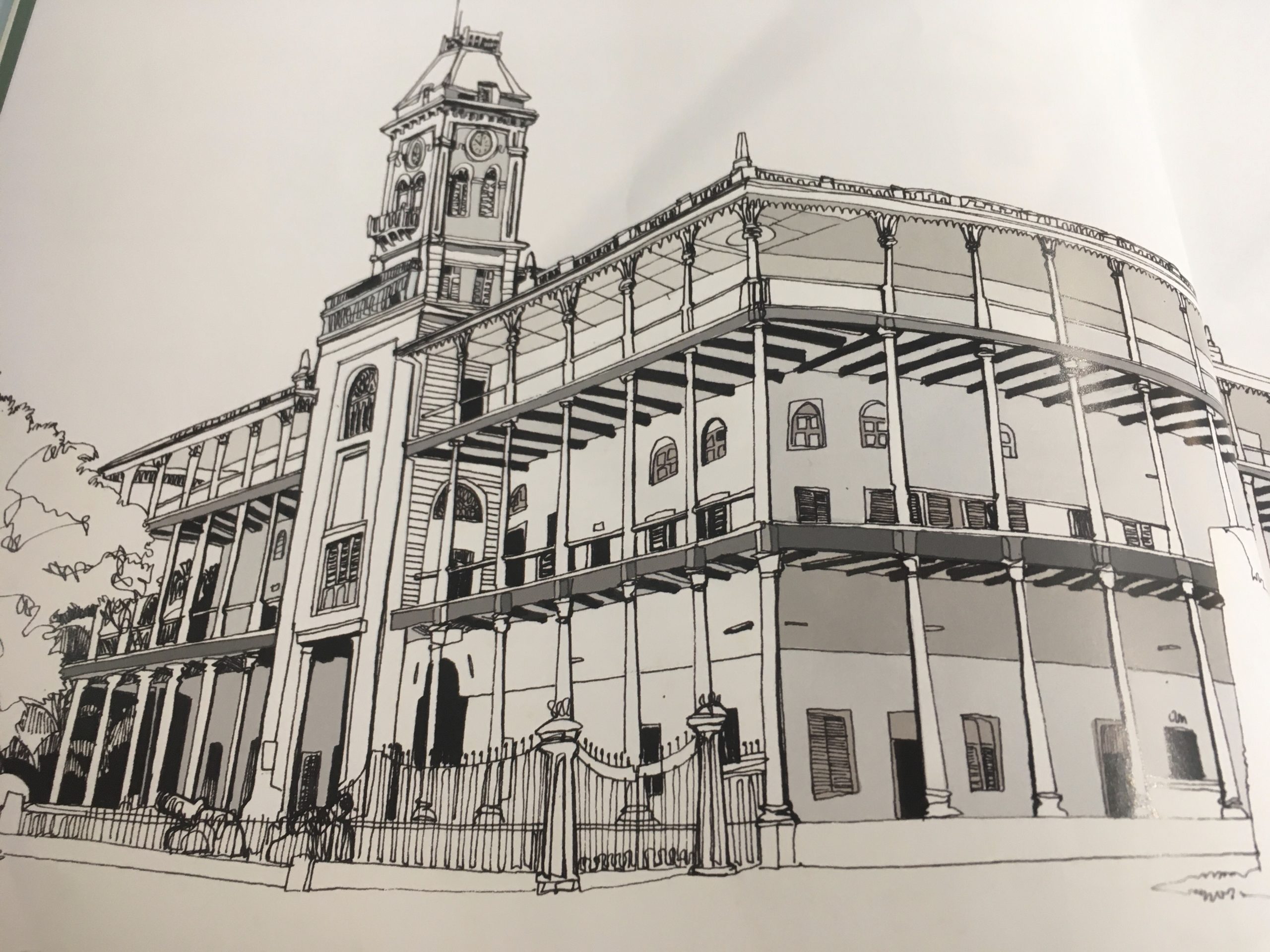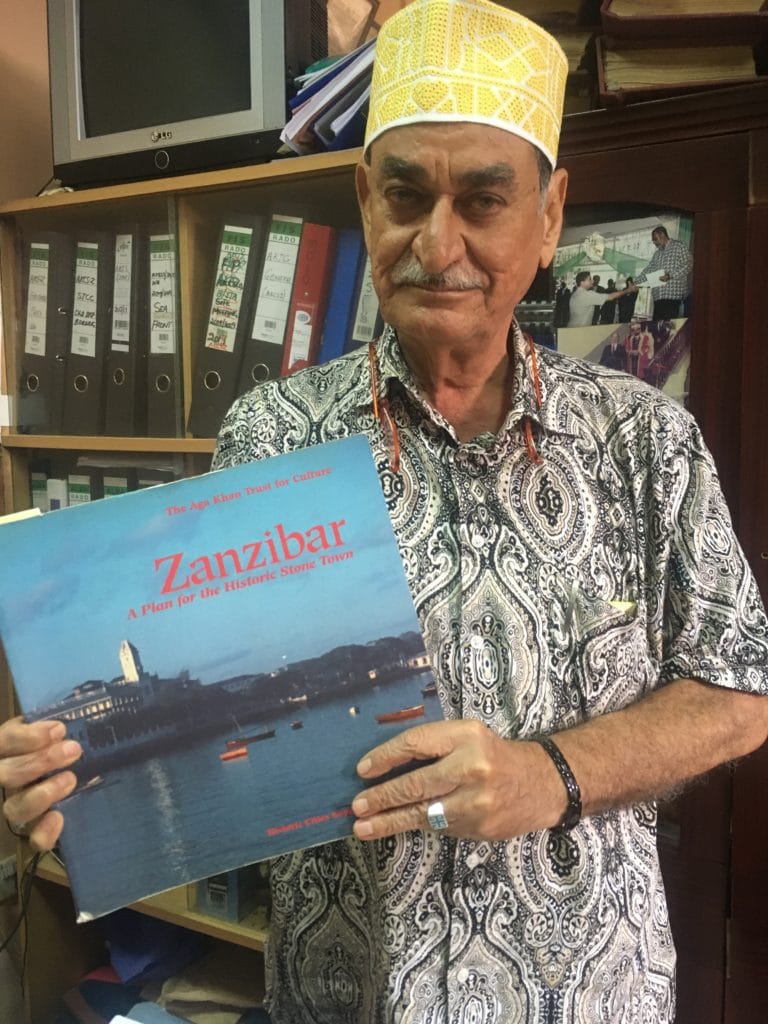
After decades of neglect the House of Wonders collapsed on Christmas Day 2020. Oman and Zanzibar have vowed to resurrect it. THE FUMBA TIMES spoke to experts and artists about the chances to save the iconic palace.
The naval bombardment during an attempted palace coup in 1896 couldn’t kill it, but decades of decay did. The House of Wonders, Zanzibar’s iconic landmark, lies in ruins since it partial collapse on Christmas Day which killed two construction workers and injured others.
The former sultan’s palace, built in 1883 by Oman’s Sultan Seyyid Bargash for ceremonial purposes, is considered one of the most important historic monuments of East Africa. While the debris is being sorted and huge wooden supporting pillars have been mounted to save what is left of the grand building, experts reckon that at least 25 per cent of the structure is gone and more could still be in danger especially during the rainy season.
Ironically, the “Beit al Ajaib”, as the building is called in Arabic, was already under repair when the tragic incident happened. In a first assessment of the crash which shocked not only ordinary Zanzibaris but heritage experts all over Africa and the Middle East, Zanzibar’s Minister for Tourism and Heritage, Lela Muhamed Mussa, concluded in February that „lack of care in the choice of the contractor and consultants and monitoring weakness of authorities led to the incident.“ Further investigations of UNESCO and Oman are still underway.
The “Tour Eiffel” of Zanzibar
For now, the clock tower is clearly missing from the historical skyline of Stone Town. Few people know, that it served as a watchtower for the port authority to control incoming ships and ferries for some years. A site fence of corrugated sheets surrounds the wounded territory in the heart of the historic city; a show vitrine with photos, constructions sketches and information about the dramatically interrupted “regeneration” efforts is still standing in front of the rubble.
The impressive three-storey former palace, a perfect rectangle with cast-iron pillars and broad verandas, was named House of Wonders because it was the first building with electricity south of the Sahara and even featured an elevator. In it’s heyday the interior had fine marble floors ands panelled walls.
But the miserable decline of the once glorious structure was set in motion when Sultan rule and colonial protectorate ended in 1964 and Zanzibar became part of Tanzania. It continued even as the majestic monument was converted into a National Museum in 2002. “The House of Wonders is for Zanzibar what the Tour Eiffel is for Paris”, said UNESCO consultant Ulli Malisius in an interview with the Bagamoyo friendship society.
All eyes on reconstruction
Now all eyes are on the resurrection of the monument as promised by the governments of Oman and Zanzibar soon after the collapse. “It is possible to reconstruct the building in its original style and shape”, architects and engineers from both countries unanimously agreed, “but it will cost more than the initial restoration”, consultant Graham Leslie said. The whole effort would be tied to a larger, long-in-the making regeneration program for the “unique living heritage” of Stone Town, he said. Architect Uli Malisius estimates the re-building costs to be ten million dollars.
“We cannot let go of the House of Wonders”, reaffirmed Mohamed F. Bhaloo, longtime chairman of the Zanzibar Stone Town Heritage Society. “It is an eye-opener for visitors because of its universal value.” His theory for the collapse: “Seafront water might have penetrated and damaged the building from underground.” UNESCO consultant Malisius supports the view that not recent negligence alone caused the enormous damage: “The scaffolding was insufficient but rainwater and humidity damages over the years did the rest.”
“Zanzibar is crying”, summed up a team of three European filmmakers who happened to be filming a documentary on the House of Wonders and Zanzibar’s heritage when the collapse occurred. Producer Friedrich Kluetsch of the film company Demax noted: “The tragedy has saddened everybody in town.”
Will a replica of the monumental building do it justice? Some artists are discussing alternative options like the erection of a modern museum celebrating the Oman-Zanzibar shared heritage. “An international architect competition should be called upon to produce ideas”, said filmmaker Kluetsch, who works for the French-German culture TV channel Arte, and has shown his recent documentary “Sons of Sindbad” at the film festival ZIFF in Zanzibar.
Among the artistic visions: A hologram of the original House of Wonder inside a modern building, a steel skeleton marking the monument’s former original dimensions. “What is important”, says Joachim Puls, another filmmaker, “that any future icon carries forwards the old symbolic of a meeting place of cultures. That’s after all what the House of Wonders stood for.”
Whatever the outcome of the discussion, it can provide a useful frame to reflect on the power of innovation in East Africa while truly honouring its heritage, this time around.
